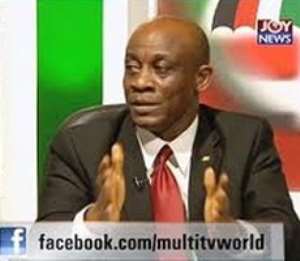
Government's move to fix the country's ailing infrastructure is anchored on a sustainable financing plan that will ease pressure on the public debt, says Deputy Finance Minister, Seth Terkper.
Amid fears that the government's resort to new commercial debt to build and repair infrastructure could tip the public-debt burden over its sustainable limit, Terkper told the Business & Financial Times the financing plan is well thought-through in order to avert imbalances or a run-up of unsustainable obligations.
“Unlike the past when government guaranteed debt for state-owned enterprises (SOEs) and failed to recover the monies, this time we want to ensure that we recover the monies. Up to about US$2.5billion of the China Development Bank (CDB) facility will be on-lent to the SOEs that will implement and manage the projects,” he said.
Under the agreement for the US$3billion CDB loan, each commercial project that has a subsidiary agreement will feature an on-lending agreement with the SOE that will execute the project.
Government is also moving away from financing capital expenditure with short-term, expensive debt instruments to raising long-term bonds, he said.
“That is why we announced the introduction of seven- and 10-year fixed-rate bonds in the 2012 budget. In the future, we're looking at issuing 15 to 20-year infrastructure bonds -- like Kenya does.”
The government's three-year borrowing costs rose to 14 percent last month, from 13 percent in July. Its last five-year fixed-rate bond yielded 14.25 percent.
The public debt stands at US$14.76billion, representing 39 percent of GDP. Domestic debt, which is about 51 percent of the total, rose sharply during the year due to the issuance of GH¢1.57billion in three- and five-year fixed-rate bonds to settle arrears and securitise debts owed by the Tema Oil Refinery.
Interest on the public debt will cover 11 percent of government spending this year, and 10 percent next year, according to the 2012 budget.
A second debt-management strategy paper will be published next month, Finance Minister Kwabena Duffuor told Parliament last week.
He said the key highlights of the strategy are to achieve a minimum concessional debt ratio of 35 percent in the external loan portfolio, and ensure floating interest-rate loans do not exceed 10 percent of the total loan portfolio.
The strategy will also cap the cost to GDP of the public debt at 50 percent, and allow for additional borrowing only when “it does not compromise long-term debt sustainability.”
Duffuor also announced government's intention to hedge the floating interest rates on external debt through swap arrangements to improve forecasting and debt-service planning.




 Avoid pre-registered SIMs, buyer and seller liable for prosecution – Ursula Owus...
Avoid pre-registered SIMs, buyer and seller liable for prosecution – Ursula Owus...
 Election 2024: Mahama has nothing new to offer Ghanaians, Bawumia is the future ...
Election 2024: Mahama has nothing new to offer Ghanaians, Bawumia is the future ...
 OSP files fresh charges against ex- PPA Boss
OSP files fresh charges against ex- PPA Boss
 Withdraw unreasonable GH¢5.8m fine against former board members – ECG tells PURC
Withdraw unreasonable GH¢5.8m fine against former board members – ECG tells PURC
 Akroma mine attack: Over 20 armed robbers injure workers, steal gold at Esaase
Akroma mine attack: Over 20 armed robbers injure workers, steal gold at Esaase
 Those who understand me have embraced hope for the future — Cheddar
Those who understand me have embraced hope for the future — Cheddar
 Ghana will make maiden voyage into space should Bawumia become President — Chair...
Ghana will make maiden voyage into space should Bawumia become President — Chair...
 Train crash: Despite the sabotage, we shall not be deterred and will persevere —...
Train crash: Despite the sabotage, we shall not be deterred and will persevere —...
 Tema-Mpakadan railway project a perversion of the original viable concept design...
Tema-Mpakadan railway project a perversion of the original viable concept design...
 Train crash: Elsewhere, everyone involved in the test will either be fired or re...
Train crash: Elsewhere, everyone involved in the test will either be fired or re...
